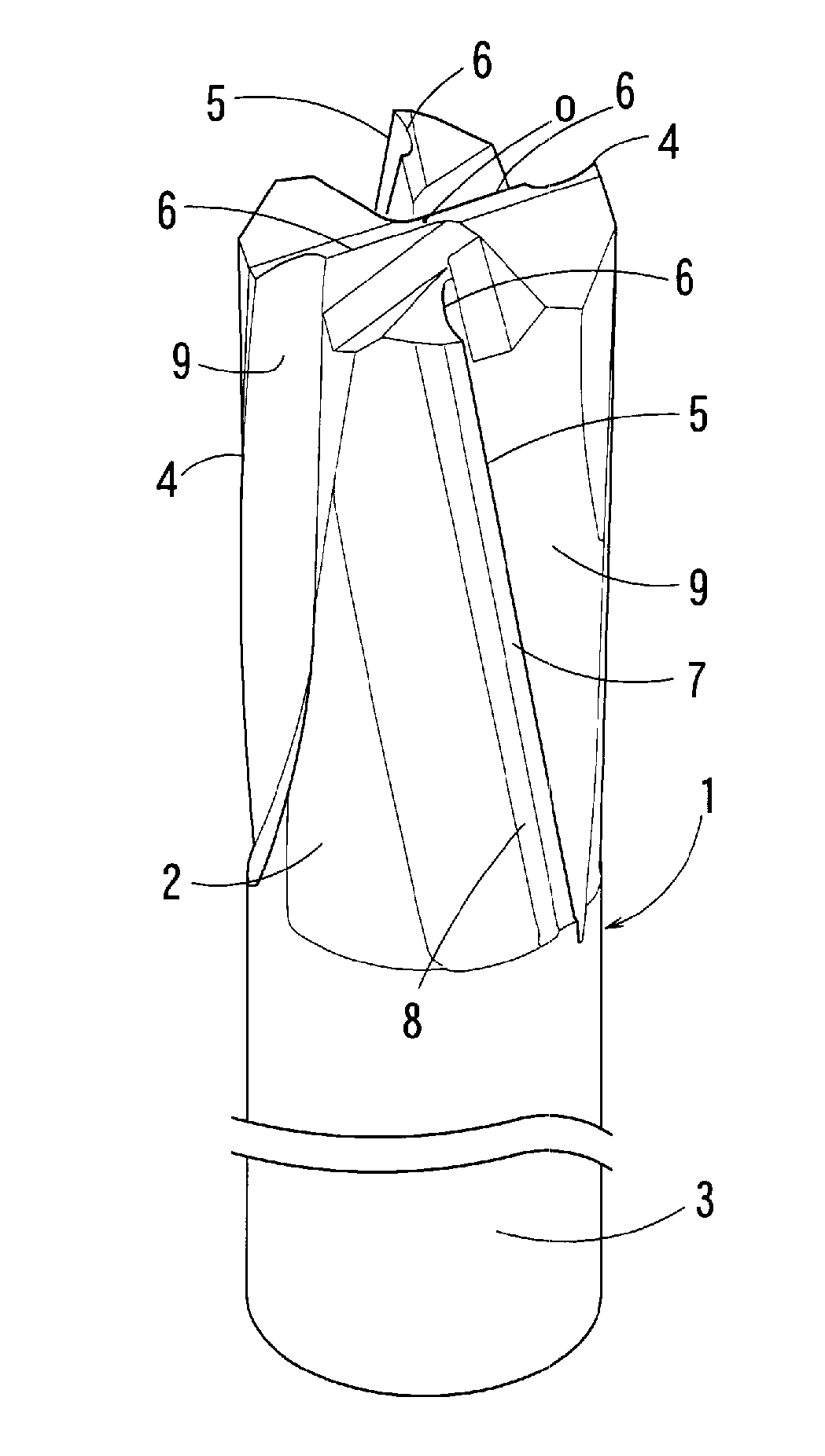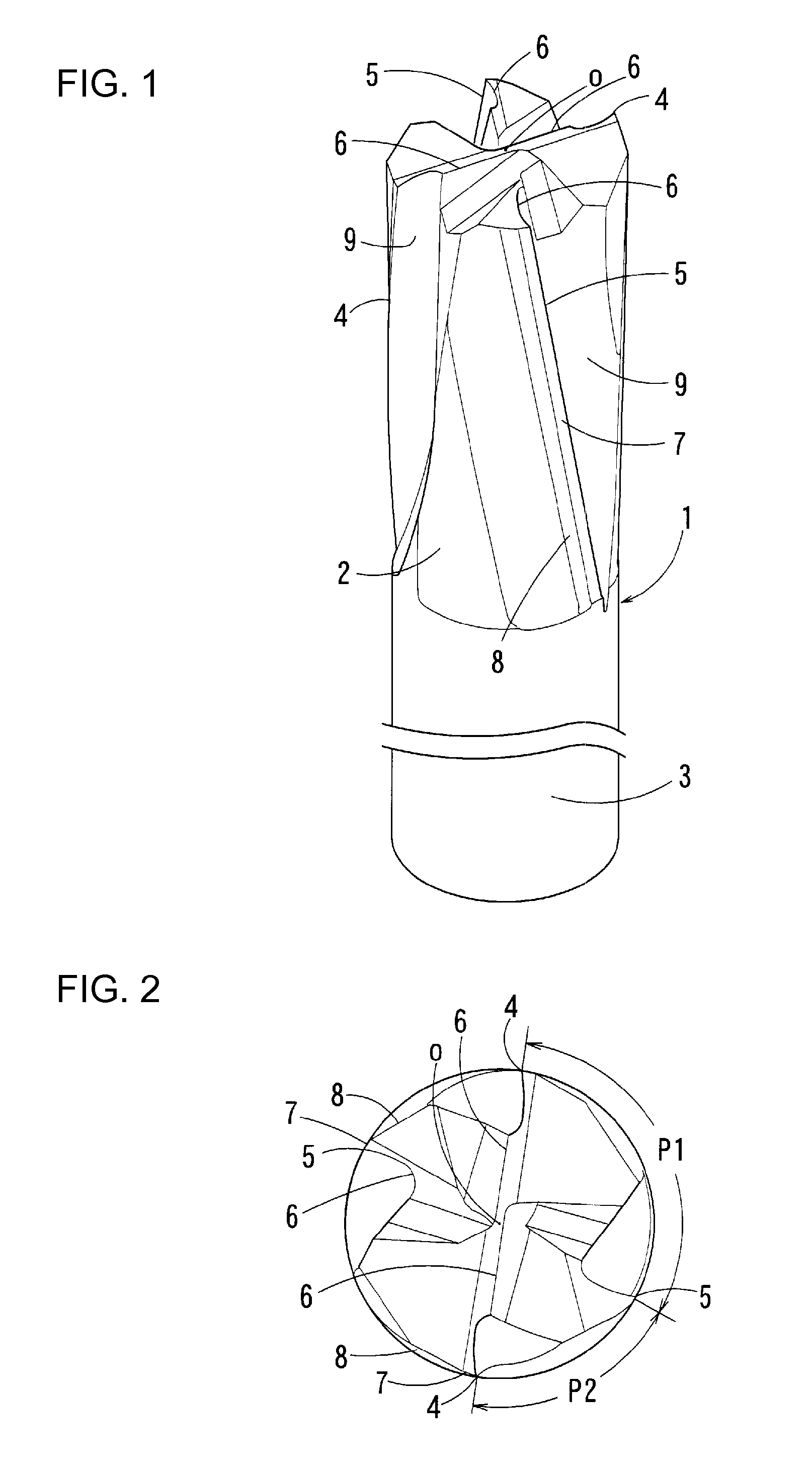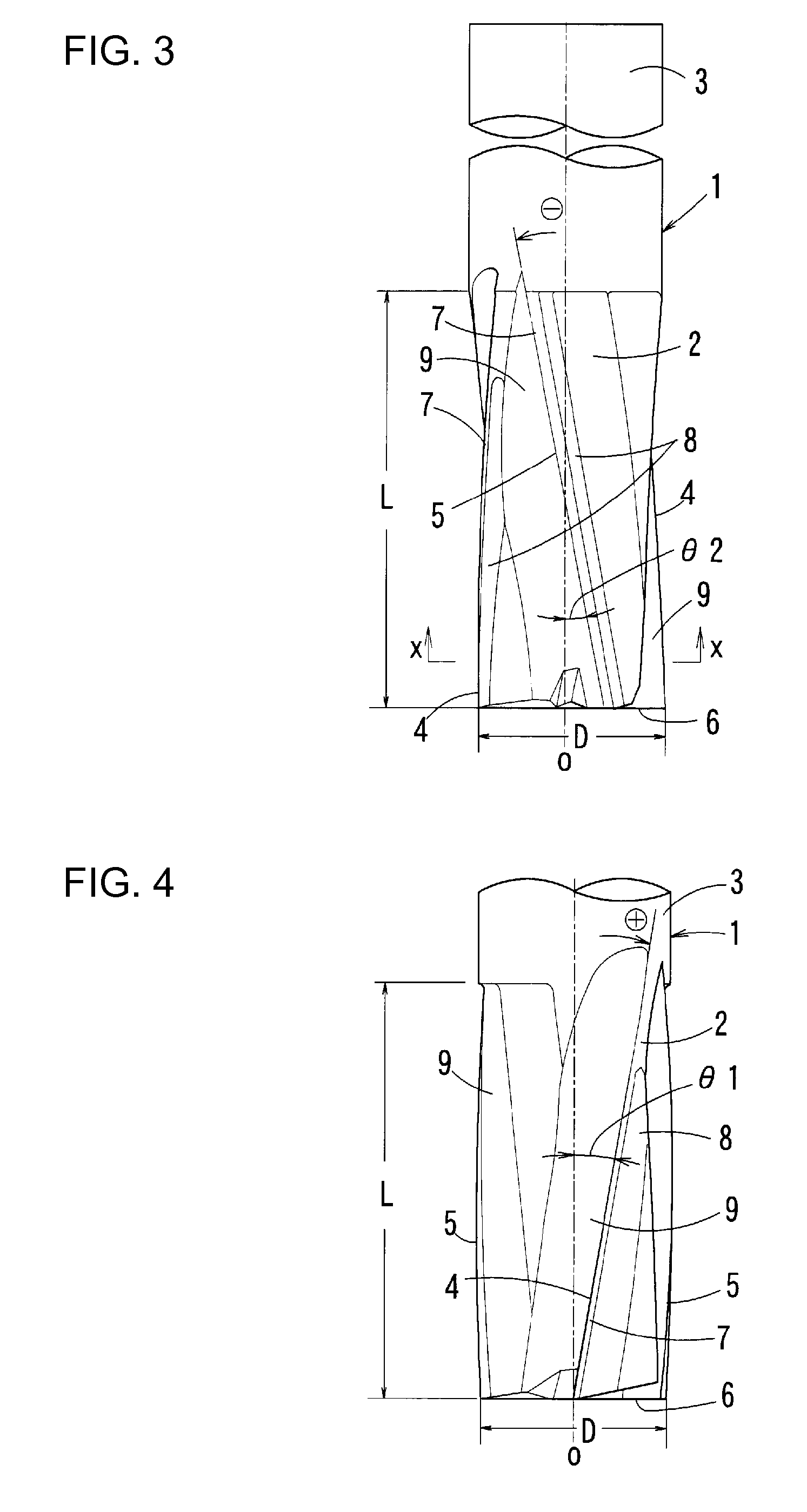End mill
a technology of end mills and end mills, which is applied in the field of end mills, can solve the problems of short end mill life in cfrp machining, unstable quality of the peripheral portion, and short end mill life, so as to reduce the occurrence of burrs, prevent discontinuous engagement of cutting edges in the workpiece, and smooth cutting.
- Summary
- Abstract
- Description
- Claims
- Application Information
AI Technical Summary
Benefits of technology
Problems solved by technology
Method used
Image
Examples
examples
[0071]In order to evaluate the performance of end mills according to the present invention, a four-edged end mill in which the helix angle θ1 of first cutting edges was set at 5° and the helix angle θ2 of second cutting edges was set at −4° and a six-edged end mill in which the helix angles of first cutting edges and second cutting edges were set as above (each being an inventive product having a diameter φ of 12 mm and an effective cutting edge length of 25 mm) were experimentally produced, and their cutting performance was compared with conventional products. As the conventional products, four-edged and six-edged end mills having helix angles of 0° and 30° and having a commonly used shape, and a four-edged end mill in which right-handed helical cutting edges and left-handed helical cutting edges were disposed in a stepped manner in the axial direction so that the upper portion and the lower portion of a region to be machined were cut separately with the two types of cutting edges,...
PUM
| Property | Measurement | Unit |
|---|---|---|
| Angle | aaaaa | aaaaa |
| Angle | aaaaa | aaaaa |
| Angle | aaaaa | aaaaa |
Abstract
Description
Claims
Application Information
 Login to View More
Login to View More - R&D
- Intellectual Property
- Life Sciences
- Materials
- Tech Scout
- Unparalleled Data Quality
- Higher Quality Content
- 60% Fewer Hallucinations
Browse by: Latest US Patents, China's latest patents, Technical Efficacy Thesaurus, Application Domain, Technology Topic, Popular Technical Reports.
© 2025 PatSnap. All rights reserved.Legal|Privacy policy|Modern Slavery Act Transparency Statement|Sitemap|About US| Contact US: help@patsnap.com



